SHINTY - CAMANACHD
Shinty - Camanachd - Iomain is a stick and ball game played mainly in the Scottish Highlands, and amongst Highland migrants to the big cities of Scotland. It is also to be found in a much wider space from the plains of Montevideo in the mid-nineteenth century, to Toronto and Canada’s Maritime Provinces; from the blistering heat of New Year’s Day in Australia over 150 years ago, to Cape Town and also the war-ravaged wastes of Europe through two World Wars. There is now a burgeoning group of players and clubs in the United States of America.
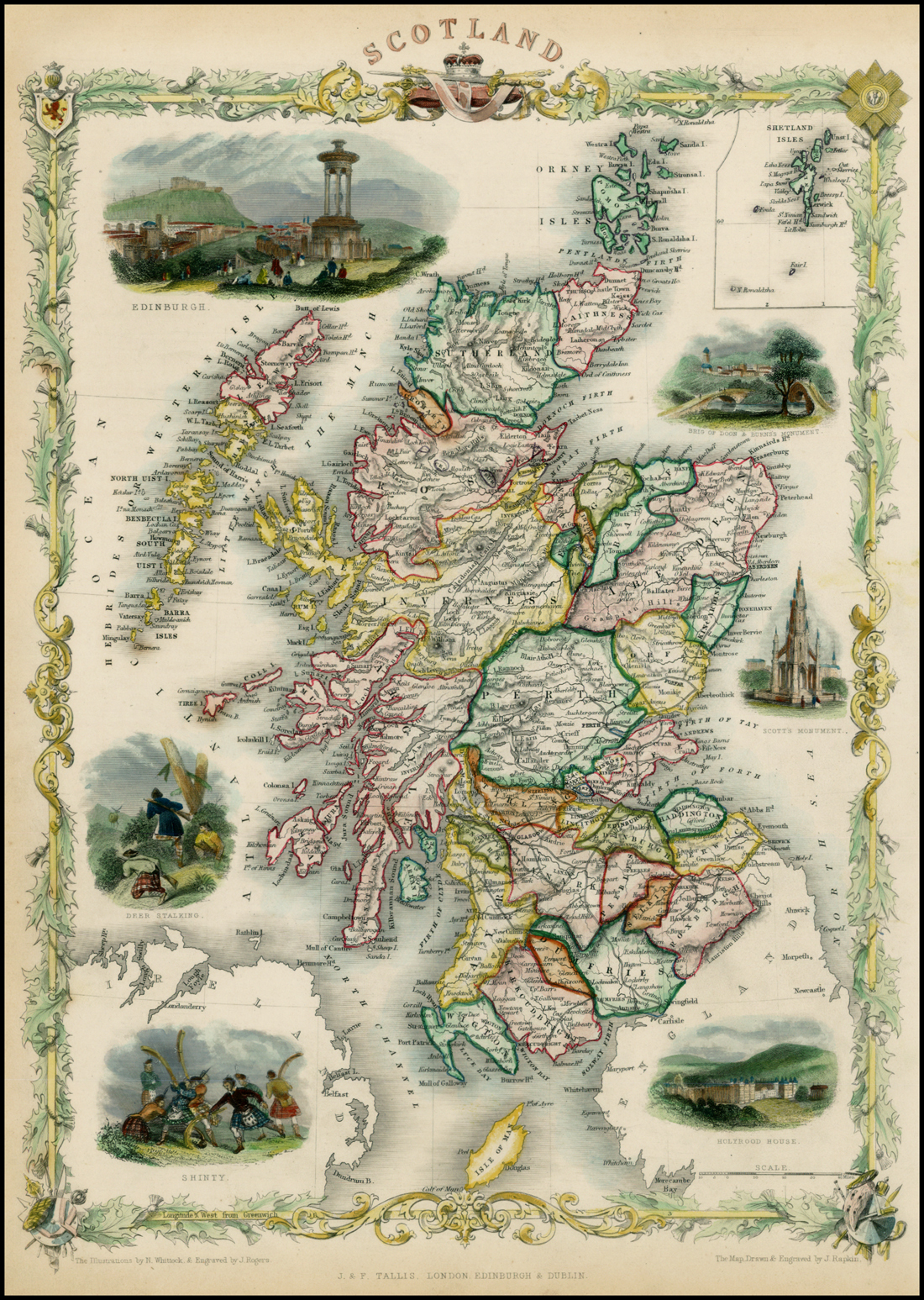
The Caman (stick) was originally made of ash or hickory cut from a tree with a natural bend. Modern caman's are mostly made from strips of wood glued together. Some craftsman still produce solid wood caman's. A caman must conform to the following standard: the head must not be of a size larger than can pass through a ring with a diameter of 2.5 inches (6.3 cms); no plates, screws, or metal in any form shall be attached to or form part of the caman. A player whose caman is broken during a game may play the ball before obtaining a replacement caman, providing the broken caman is not deemed dangerous to himself or another player.
The Shinty Ball is a similar size and looks like a baseball with the stiching facing outward. The interior is cork and worsted, with a outer cover of leather or a similar approved material. The original shinty balls were made from tree roots, blocks of wood, pieces of cork, sheep droppings, sheep's vertebrae and India Rubber. Basically anything that could be struck by the caman without breaking up was used.

Shinty is one of the fastest, most physically demanding and skillful sports in the world, and is played outdoors in all types of weather. In shinty there is no restriction on the swing of the caman. Players can strike the ball with both sides of the caman, and play the ball in the air. Handling and reaching for the ball is not allowed, unless you are the goalkeeper. Players may only stop the ball with the caman, the chest, two feet together or one foot on the ground. Only the goalkeeper may use his hands and then only with an open palm. He may not catch it. Kicking the ball is not permitted. You can carry the ball on your caman, which can also be swung above shoulder height.
The object of the game is to score goals. A goal can only be scored with the caman; there is no goal when the ball "has been kicked, carried or propelled by hand or arm by a player of the attacking side." A goal can not be scored directly from a free-hit.
When the ball goes out of play at the side of the pitch, the 'Shy' is taken by a player who strikes the ball with the narrow side of the stick - a unique skill of shinty.
Playing the ball with the head constitutes a foul whether intentional or not as it is considered dangerous play. Other examples of dangerous play which will be penalised are players, while grounded, playing the ball and reckless swinging of the caman in the air which might endanger another player.
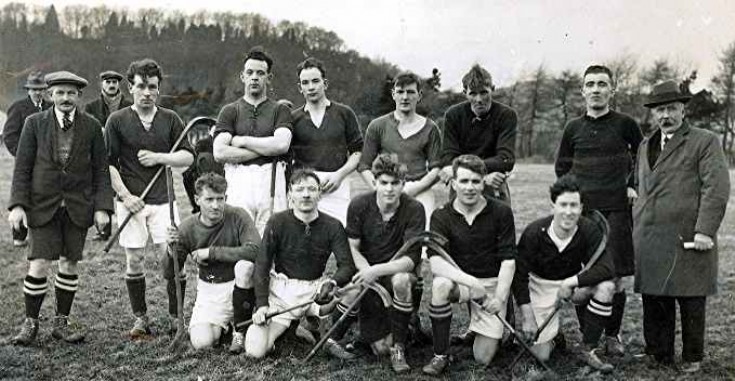
In women’s shinty and in some competitions for children and young people, there are fewer players in the team and the pitch dimensions are smaller.
In men’s shinty there are 12 players in each team – one of whom is always the goalkeeper.
Each player has a caman, or curved stick, and it is with the caman that the small leather ball is struck. A well-struck shinty ball can travel over 100 metres at very high speed.
Competitive shinty is organised into league and knock-out cup competitions at various levels and grades. In the men’s game the most coveted trophies are the Camanachd Cup, first played for in 1895 and in women’s shinty the ultimate competition is the Valerie Fraser Cup. Both these events take place in September each year.
Internationally shinty is only just developing but an annual match between shinty and the Irish game of hurling (Camogie when played by women) – which have the same historic roots, although each has evolved in its own way – takes place in October. A composite set of rules has been agreed between the Camanachd Association and its Irish counterpart, the Gaelic Athletic Association.
The full Rules of Play for shinty are contained in the Camanachd Association’s Bylaws, but variations to these rules, mainly to do with numbers in a team and the dimensions of the field of play, exist for Women's Shinty and for children and young people.
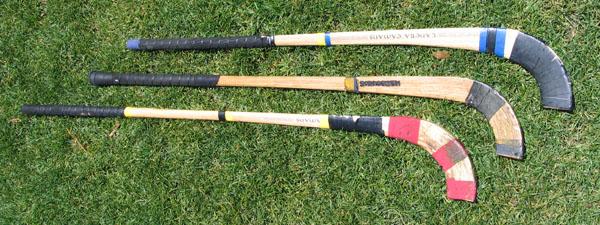
The Caman, which is a stick of about 31⁄2 ft long with two slanted faces. Unlike the Irish camán, it has no blade. The caman is made of wood, traditionally ash but now more commonly hickory with lamanated layers, and must not have any plate or metal attached to it. The caman would be made from any piece of wood with a hook in it, hence caman, from the Scottish and Irish Gaelic word, cam meaning bent or crooked. It can also be called a stick or club. The slant of the face will vary according to the position that the stick is used for.
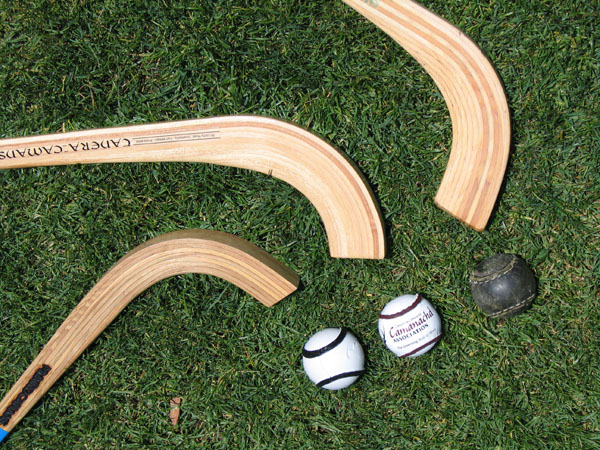
The Ball is a hard solid sphere slightly smaller and looking like a baseball, consisting of a cork core covered by two pieces of leather stitched together. The seam is raised. It is very similar to a hurling sliotar in that it resembles an American baseball with more pronounced stitching. The ball is usually white, but there is no statutory colour, black being a common colour for Kyles Athletic and fluorescent balls now being available.
Plastic balls or soft balls are often used in youth competitions such as the variant, "First Shinty".
The Pitch playing area is much larger than for other outdoor team sports such as football, rugby or field Hockey. The pitch dimensions can be up to 155m long by 73m. Although some developmental competions for children and young people take place indoors, or outdoors on artificial surfaces, shinty is primarily an outdoor sport played on a natural grass surface.
HISTORY
Shinty is older than the recorded history of Scotland. It is thought to predate Christianity, having come to Scotland with the Gaels from Ireland. Hurling, which is a similar game to shinty, is derived from the historic game common to both peoples which has been a distinct Irish pastime for at least 2,000 years. Shinty/Hurling appears prominently in the legend of Cúchulainn, the Celtic mythology hero. A similar game was played on the Isle of Man known as cammag, a name cognate with camanachd, which was being played in sixth, seventh and eighth centuries.The old form of hurling played in the northern half of Ireland, called "commons", resembled shinty more closely than the standardised form of hurling of today. Like shinty it was commonly known as camánacht and was traditionally played in winter. was being played in sixth, seventh and eighth centuries.
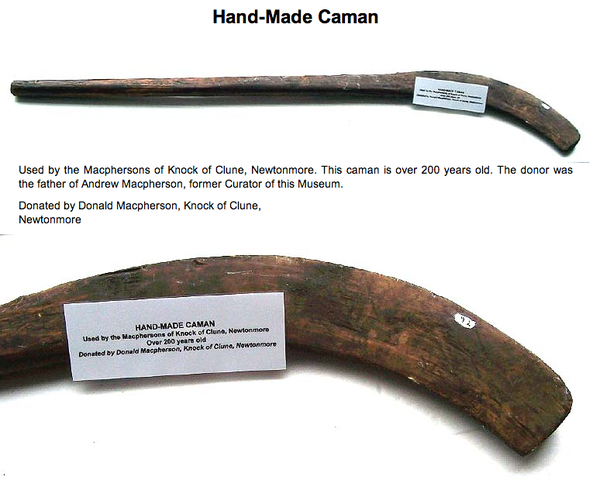
The term ‘shinty’ itself requires some explanation. Iomain, or more latterly camanachd, were the Gaelic terms, meaning driving. ‘Shinty’ (or its variants shindy, shinnie, shindig etc), however, has proved much more contentious, and the general view is that it is derived from the Gaelic sinteag – a ‘leap, bound’. Shinnie, in fact is held to be the older of the two (around 1600) with shintie replacing it some 100 years later.

Shinty was not confined to the Highlands, or even Scotland. The first club established in England was Cottonopolis, Manchester, formed prior to December, 1875. The pages of the Highlander newspaper, particularly in the late 1870s and early 1880s, read more like an account of English Premier league football matches with details of games and frequent references to Birmingham, Manchester Camanachd, Old Trafford, the Highland Camanachd Club of London, Cottonopolis, Bolton, Nottingham Forest and Stamford Bridge.

Shinty, or some similar version of stick and ball activity, has been played through time virtually UK-wide, from the more hospitable and gentler plains of the Scottish Borders; from the Yorkshire moors to Blackheath in London, to wind-swept St Kilda as the intrepid traveller Martin Martin described on his epic voyage round the Hebrides around 1695:
‘They use for their diversions short clubs and balls of wood; the sand is a fair field for this sport and excercise in which they take great pleasure and are very nimble at it; they play for some eggs, fowls, hooks and tobacco; and so eager are they for victory that they strip themselves to their shirts to obtain it.’

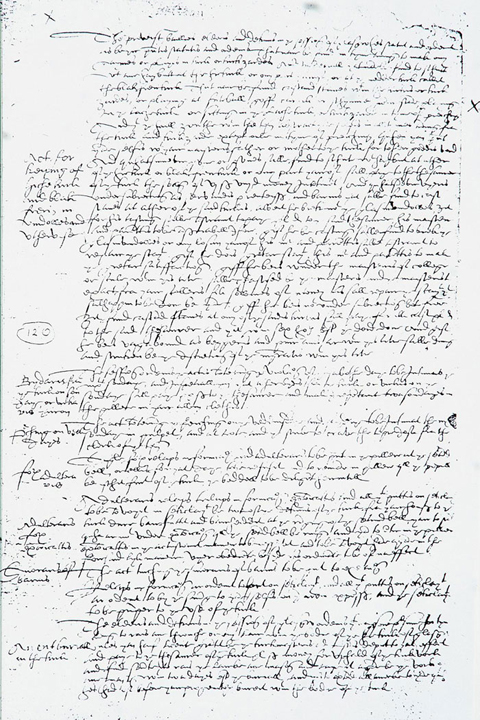
There is no doubt but that shinty (or more accurately, some early form of the stick and ball game) was played in pagan times. In Scottish terms, the earliest written reference to shinty or ‘schynnie’ is in 1589, in the Kirk Session Records of Glasgow. This is reproduced in full as displayed here. The passage of interest (which is marked with an X) reads:
‘that nane be fund castand stanes wi th in the kirkis zardes, or playing at futeball, goff, carrick or schynnie’
In 1816 members of the Burgess Golfing Society complained that their play on Bruntsfield Links was being made hazardous by shinty players.
One of the most famous early depictions of shinty play is a painting called A Highland Landscape with a Game of Shinty. It is believed to have been painted around 1840, and was attributed to D. Cuncliffe (1826-55) and A. Smith of Mauchline (1840) by Father Ninian MacDonald in the frontispiece of his famous book Shinty. The painting contains all the elements of the (fictional) Highland scene of the time, with a shinty match the central action, pipers, dancers and Lairds set in an idyllic and completely over-romanticised Highland Glen.
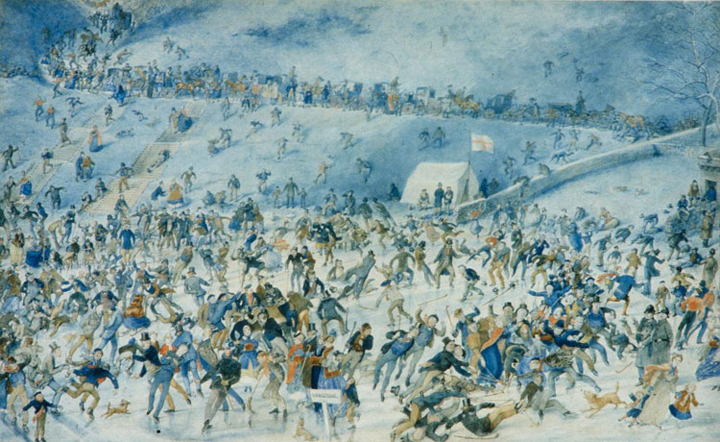
Charles Altamont Doyle (1832-93) created this watercolor painting - circa 1876. The painting shows shinty being played on ice at the Duddingston Loch near Edinburgh, Scotland. The painting is held at the National Museum in Edinburgh.
There was no event of greater importance in connection with the celebration of the advent of the New Year in the Highlands than the New Year’s Day Shinty Match. Very often ‘A cask of whisky strong’, was the victor’s prize. These contests were often between two districts or parishes, with no limit to the numbers taking part (as many as 2,000 men engaged), from the forenoon until darkness fell. Occasionally a hogs-head of whisky was given to the winners by the proprietor.
One of the best sources for determining shinty’s ‘place and space’ is the dictionary. In Jamieson's Etymological Dictionary of the Scottish Language we find shinty sandwiched between ‘Shinnock’ and ‘Shiolag’. Perhaps more surprisingly however, the English Dialect Dictionary(EDD) records shinham in the north of England, shinnins and shinnop in Yorkshire, and shinny and shinty in the north of England generally, and as far south as Lincolnshire, Nottinghamshire and Gloucestershire. The dictionary mentions shinty being played in Workington in Cumberland as late as 1888, when two boys were fined for playing the game in the street and a third ‘was let off, having been well thrashed by his parent’.
Somewhere along the line of its development into the sport it is today. Shinty was linked to training warriors. It was seen to be the perfect way to develop the skills that would be needed in battle.
The Camanachd Association came into being on 10th October 1893, at a meeting held in the Victoria Hall, Kingussie by 23 of the 33 Shinty clubs then in existence. C.J.B. Macpherson of Belleville (now Balavil) was the chairman of the founding conference which formulated a standardised set of rules and elected officers to see that the rules were followed. Simon, Lord Lovat was the first President and three Macphersons were appointed Vice-presidents -- Belleville, Corrimony and Cluny. John Campbell was the first secretary-treasurer.

As the sport was developing, different rules were being used in different parts of the country. With the exception of the Glasgow Celtic Society, whose shinty competition had begun in 1879, there was no proper organisation to lead the development of the sport. What was needed was a body that could lead the development of shinty across the whole of Scotland. This would ensure that there was one set of rules and provide the framework for organising competitions on a national level. And so the Camanachd Association was formed.
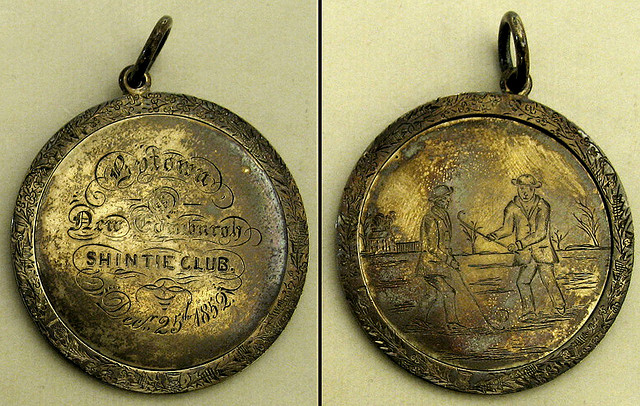
Shinty Medal from December 25, 1852 - New Edinburgh Scots vs Sassenachs of Bytown
SHINTY.com http://www.shinty.com/home/




































